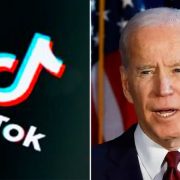
The increase in credit card debt can be attributed to a few different factors. One key factor has been the economic disruption caused by the pandemic. With more people under financial strain due to loss of jobs or reduced hours, many have resorted to their credit cards to make ends meet. This, coupled with the record-low interest rates, has made credit cards an attractive option for short-term borrowing.
Other contributing factors to the rise in credit card debt include the popularity of contactless payments and the consumer focus being on experiences rather than possessions. With contactless payments, consumers are likely to spend more as there is minimal thought attached to their purchasing decisions. Additionally, increasingly we see consumers preferring to spend their money on experiences, such as vacations, rather than things, meaning the expenses go on the credit card and may be difficult to pay off when more immediate bills for basics, such as housing, must be paid.
Finally, inadequate consumer financial literacy is likely to be a driver in the increase of credit card debt. With limited financial knowledge, it can be difficult for consumers to make informed decisions about their spending and borrowing.
Overall, the record-high debt reflects the current economic situation and the changes in consumer spending habits during the pandemic. Consumers should be wise with their spending to avoid getting bogged down in high interest credit card debt.











